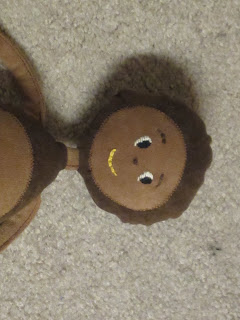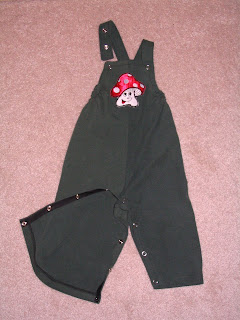
This is the second garment I sewed from the book Sewing for Baby by Kerstin Martensson. I chose this pattern, because DS always pulls off his socks. This overall has feet, as well as snaps for easy diaper changing.
In this one, instead of hammering the snaps, I decided to go with what Kristy suggested: snap tape. Thanks for the comment, Kristy! :)
I also applied Tulip Slick Paint to the feet. Thanks for the tutorial, Cheri! I used dots, as Cheri mentioned that the continuous lines crack in the wash. We haven't tried on the pants yet, so don't know how it works for us, but it seems like a very cool idea, and inexpensive to make. This was my first time using Tulip Paint, so my dots are not perfect. Plus I may need to put more dots on the soles for better grip.
Pattern: Kwik Sew's Sewing for Baby by Kerstin Martensson
Size: L 6-12 m (comes in XS, S, M, L, XL sizes)
Fabric: stretch knit
Things I learned:
- I used a soft knit fabric for these pants, but it was very difficult to work with. it was very stretchy, and I couldn't use my walking foot, as I had to sew so close to the snap tape. The fabric of the snap tape, and the fabric of the pants really didn't like each other (even though I put fusible interfacing on the fabric). The result therefore is a little sloppier than what I normally like. :( But have taken this apart so many times, that I just have to call it done.
- I had the hardest time figuring out how to add the snap tape so that the edges turn properly. I thought I had it figured out, but it still looks a bit weird. The instructions talk about applied snaps, but not snap tape.
- If I sew with this fabric again (I still have quite a bit left over), I'll chose a pattern that can be put together entirely with a serger. :)











